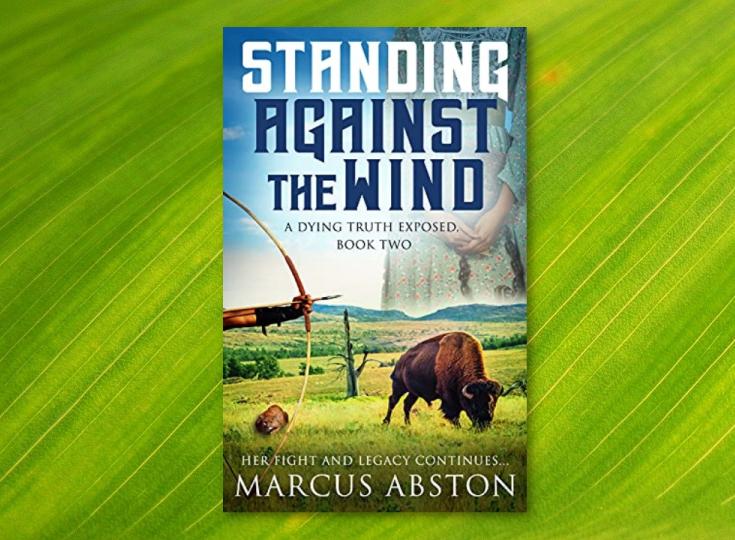Editorial Review: Standing Against the Wind (A Dying Truth Exposed, Book 2) by Marcus Abston

Standing Against the Wind by Marcus Abston, continues Annabelle’s story from Bloodlines.
In our time, Albert is telling his children and grandchildren about their family’s history and ancestors. He wants the family to know where they’ve come from, even if the story is hard to hear. The family now notices features in each other, which came from the genes of their enslaved and Native ancestors, and they ask Albert to share more of their family history. This theme of blood coming through the family appears again and again in this fascinating historical novel.
The family history picks up with their ancestor, Annabelle, an escaped slave, leaving the life she’d built in Missouri because her safety and freedom were in danger. After a severe tragedy, Annabelle hides with the Cherokee people as she tries to restart her life. This is a period of healing for Annabelle, as she learns about the Cherokee ways, learns to speak the Cherokee language, develops new friendships, and learns from the wisdom of a trusted elder. Her budding friendship with Grace, a plainspoken, direct Cherokee woman, brings out the best in both of them and develops their characters in interesting ways.
But in Annabelle’s time living with the Cherokee people, not everyone she meets has good intentions towards her. Slavery is legal and accepted in the Cherokee Nation, even though some characters question it, which adds to Annabelle’s problems. Some characters see Annabelle as an unwanted outsider and a potential danger.
Like in the first novel, many characters espouse realistic attitudes of the time period, even if those attitudes are racist, sexist, or just completely outdated to modern readers. There’s also dated language that would have been in use at this time. For me, this serves to make the historical setting more vivid and realistic, as well as to emphasize what Annabelle is going through.
Throughout the novel, a religious thread reappears. Many times, Annabelle’s faith adds to her healing. She takes comfort in prayer and finds certainty in calling herself a Christian. Readers will see a strong character here, with immense personal reserves in the face of almost constant danger. Throughout Standing Against The Wind, Annabelle alternately draws strength from her faith, and questions a God who seems incredibly distant from the heartbreaks and hardship of her life. This personal, internal struggle, even more than any of her external struggles, is the heart of this story. Readers can also see why Albert wants to share this family history with the younger generations, in order to inspire them and to share Annabelle’s faith with her descendants.
From the beginning of this, we readers know that Albert is telling Annabelle's story, and this knowledge might take away from the book’s suspense, but still, the excellent storytelling brings Annabelle's choices to life. Readers will understand Albert’s need to share Annabelle's story with the younger generations and make sure that Annabelle’s life is remembered by her modern-day descendants. The themes of family strength, faith, and blood recur throughout the novel, and the story ends with Albert’s promise to tell the young people even more about their family.





